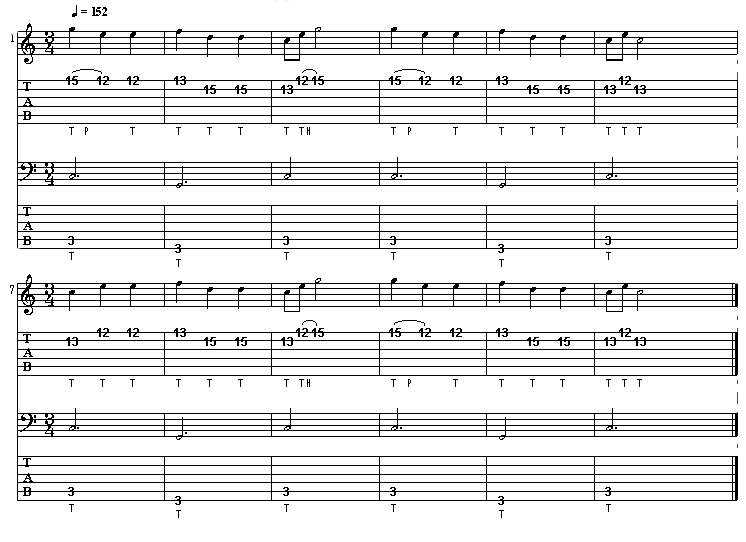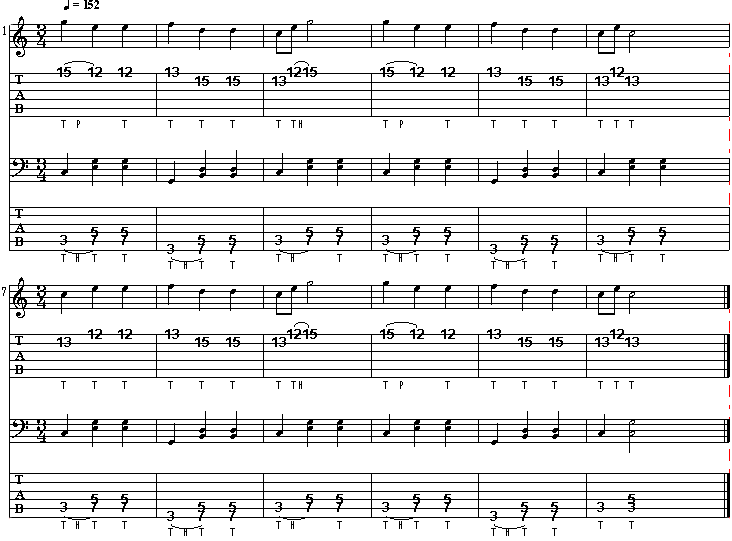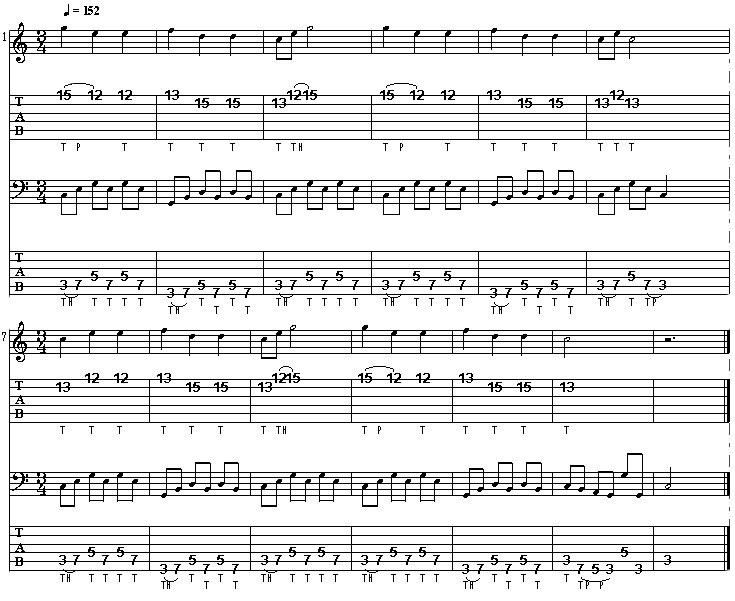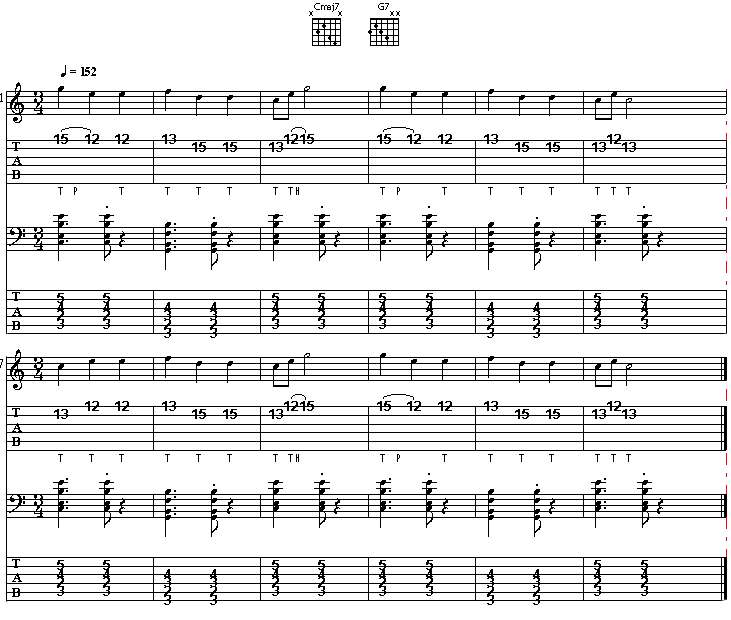Wokshops - The cat on the fence
Let's start with "The cat on the fence" (an old Polish standard). Using this simple example I will try to demonstrate the different functions of both hands, their independence of each other, the use of harmony as well as how to achieve proper intonation. All examples are at 152 bpm (beats per minute), but I recommend starting at 60 or even slower, and gradually speeding up.
Each example has an attached mp3 file. The files are pretty small - all are under 150 kb, except for the last one which contains some improvisation work by me and is 750kb.
Let's begin then. This first version of "The cat on the fence" is a combination of the melody line, played by the right hand, with a very simple bass line. The bass line is just two notes: C and G (both of which are played on the 3rd fret).


In the next example we will go a bit further. The right hand will continue to play the melody, but the left will outline the C major (C,E,G) and G major (G,B,D) chords. Both of these chords are played in their basic position, i.e. the root is the lowest note and the third and fifth are stacked on top. With the exception of the ending the left hand will only play quarter notes. The bass line can be played in one of two ways: one using the 3rd, 7th and 5th fret consecutively, and one using the 3rd, 2nd and 5th. It is worth trying both of these methods. I have transcribed the first line using the first method and the second line using the second method. In practice - use whichever method you feel comfortable with. I use 3-7-5.



The third version of "The cat on the fence" has a piano-accordion version of comping which is sometimes used by folk and pop musicians. A slightly modified version of this can often be heard in ragtime standards. Where did the left hand doublestops come from, you ask? Well, just look at the previous example...



The fourth example has an eighth-note accompaniment consisting of the same C major and G major chords used in the previous exercises. This type of accompaniment reminds me of Mozart who used eighth-notes in abundance in this setting.



"The cat on the fence" - the jazz version. To liven things up a little I have added some components to the chords we are using. To C major I added a major 7th, thus creating Cmaj7, and to G Major I added a minor 7th, thus creating G7. Cmaj7 is a common tonic chord in jazz music, while G7 is often used in classical harmony, where a major dominant chords resolves very nicely to the tonic. If you don't understand any of this, don't worry - just play it.
Note how I used a different time signature in the accompaniment - I divided 3/4 in half. This introduces an interesting beat which is commonly used in jazz (every other chord is accented).
You will see there are moments when both the right and left hands are playing simultaneously on the B string. Play this like notated - the note played on the B string by the left hand will not sound, causing the chord to lose some of it's 'color', but don't try to avoid using the B string on purpose. This is just one example of some of the perks of using the two-handed tapping method.



I have also improvised somewhat based on this melody (to listen click on the speaker symbol above). I stay mostly within the ionian mode, (i.e. normal major scale), though there are some exceptions. I have simplified the accompaniment even more by reducing it to a simple Cmaj7-G7 motif.
Remember though - don't practice too hard! Remember that Swiatoslaw Richter always kept his practice time to 3 hours every day, and he was a master.